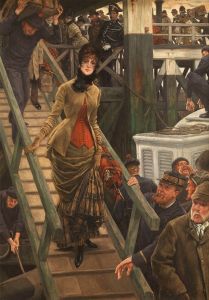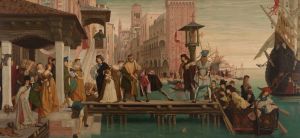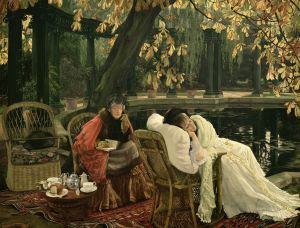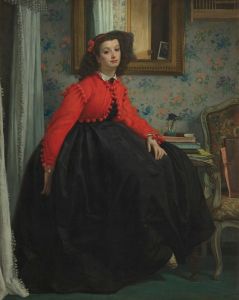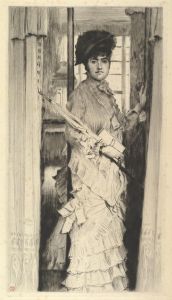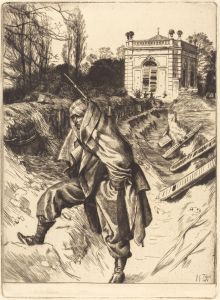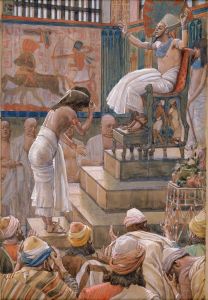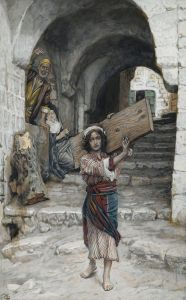
The Parable of the Prodigal Son, No. IV; The Fatted Calf
A hand-painted replica of James Tissot’s masterpiece The Parable of the Prodigal Son, No. IV; The Fatted Calf, meticulously crafted by professional artists to capture the true essence of the original. Each piece is created with museum-quality canvas and rare mineral pigments, carefully painted by experienced artists with delicate brushstrokes and rich, layered colors to perfectly recreate the texture of the original artwork. Unlike machine-printed reproductions, this hand-painted version brings the painting to life, infused with the artist’s emotions and skill in every stroke. Whether for personal collection or home decoration, it instantly elevates the artistic atmosphere of any space.
James Tissot's painting The Parable of the Prodigal Son, No. IV; The Fatted Calf is part of a series of works by the French artist that depict scenes from the biblical parable of the Prodigal Son, as recounted in the Gospel of Luke (Luke 15:11–32). This series illustrates key moments in the story, which tells of a young man who squanders his inheritance but is ultimately welcomed back by his father with forgiveness and celebration.
In The Fatted Calf, Tissot portrays the moment when the father orders the preparation of a feast to celebrate the return of his repentant son. The title refers to the "fatted calf," a symbol of abundance and festivity in the biblical narrative. The painting captures the themes of reconciliation, mercy, and joy that are central to the parable.
Tissot, known for his detailed and narrative-driven style, created this work during a period when he focused heavily on religious subjects. After a successful career as a society painter in Paris and London, Tissot experienced a spiritual awakening in the late 19th century, which led him to devote much of his later career to illustrating biblical stories. His works from this period are characterized by meticulous attention to historical and cultural details, as well as a deep engagement with the emotional and spiritual dimensions of the stories he depicted.
The painting is part of a larger series on the Prodigal Son, which Tissot completed in the 1880s. These works reflect his interest in storytelling through sequential imagery, a technique that aligns with his broader artistic approach. Tissot's religious paintings often combine elements of realism with a sense of theatricality, drawing viewers into the narrative.
The Parable of the Prodigal Son, No. IV; The Fatted Calf is notable for its composition and use of color, which convey the celebratory atmosphere of the scene. The work is part of Tissot's broader exploration of biblical themes, which culminated in his ambitious project to illustrate the life of Christ in a series of watercolors.
The painting is held in the collection of the Brooklyn Museum in New York, where it is part of a group of works by Tissot that explore religious and moral themes. It continues to be appreciated for its artistic merit and its ability to bring the biblical story to life for contemporary audiences.






